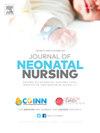The nursing-midwifery workforce size significantly influences the reduction of neonatal mortality rate
Q2 Nursing
引用次数: 0
Abstract
Purpose
This study aimed to quantify the confounded and independent role of nursing-midwifery workforce size (NMWS) in protecting against neonatal mortality (NMR) globally and regionally.
Methods
Scatter plots, bivariate correlation, partial correlation, and multiple linear regression analyses were conducted to assess the correlations between NMWS and NMR. This cross-sectional study fully accounted for potential confounding effects of economic affluence, total fertility rate, and urbanization on this relationship. Countries were categorized to explore regional variations in the protective role of NMWS in reducing NMR.
Results
Explaining 55.76% of NMR variance worldwide, NMWS correlated to NMR negatively and significantly. NMWS still significantly correlated to NMR, but only explained 9.12% of NMR variance when the confounding effects of economic affluence, total fertility rate and urbanization were removed in partial correlation. Linear stepwise regression identified NMWS as the third most significant variable influencing NMR variance worldwide. NMWS correlated to NMR significantly and consistently in different country groupings, especially in developing countries. This suggested that nursing shortage is a significant global issue, but worse in developing countries.
Conclusions
NMWS appears to have been a protective factor against NMR globally, particularly in developing nations. This protective effect remained significant even after adjusting for economic affluence, total fertility rate, and urbanization. The consistent negative correlations observed between NMWS and NMR, both globally and regionally, highlight the importance of addressing the chronic shortage of nursing and midwifery personnel, prompting healthcare authorities to prioritize this issue.
护理-助产士队伍的规模对降低新生儿死亡率有重大影响
目的 本研究旨在量化护理-助产士队伍规模(NMWS)在全球和地区范围内降低新生儿死亡率(NMR)方面的混杂和独立作用。方法 通过散点图、二元相关、偏相关和多元线性回归分析来评估护理-助产士队伍规模与新生儿死亡率之间的相关性。这项横断面研究充分考虑了经济富裕程度、总和生育率和城市化对这一关系的潜在混杂影响。对国家进行了分类,以探索 NMWS 在降低非地中海贫血症方面的保护作用的地区差异。结果NMWS 解释了全球 55.76% 的非地中海贫血症差异,与非地中海贫血症呈显著负相关。虽然 NMWS 与 NMR 仍有明显相关性,但在部分相关性中剔除经济富裕程度、总和生育率和城市化的混杂影响后,NMWS 只能解释 9.12% 的 NMR 变异。线性逐步回归确定 NMWS 是影响全球核磁共振方差的第三大变量。在不同的国家组别中,尤其是在发展中国家,NMWS 与 NMR 的相关性显著且一致。这表明护理人员短缺是一个重要的全球性问题,但在发展中国家更为严重。即使在对经济富裕程度、总和生育率和城市化进行调整后,这种保护作用仍然很明显。在全球和地区范围内观察到的 NMWS 与 NMR 之间的持续负相关关系凸显了解决护理和助产人员长期短缺问题的重要性,促使医疗保健机构优先考虑这一问题。
本文章由计算机程序翻译,如有差异,请以英文原文为准。
求助全文
约1分钟内获得全文
求助全文
来源期刊

Journal of Neonatal Nursing
Nursing-Pediatrics
CiteScore
2.00
自引率
0.00%
发文量
143
期刊介绍:
Aims & Scope: This is the practical, bimonthly, research-based journal for all professionals concerned with the care of neonates and their families, both in hospital and the community. It aims to support the development of the essential practice, management, education and health promotion skills required by these professionals. The JNN will provide a forum for the exchange of ideas and information between the range of professionals working in this field; promote cooperation between these professionals; facilitate partnership care with families; provide information and informed opinion; promote innovation and change in the care of neonates and their families; and provide an education resource for this important rapidly developing field.
 求助内容:
求助内容: 应助结果提醒方式:
应助结果提醒方式:


